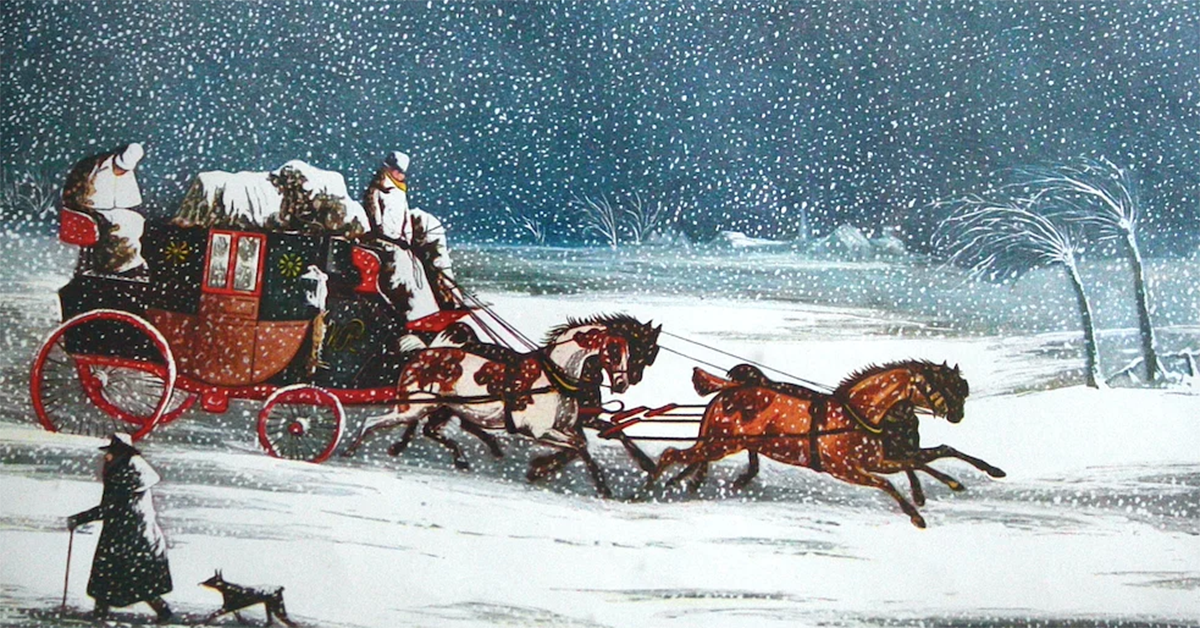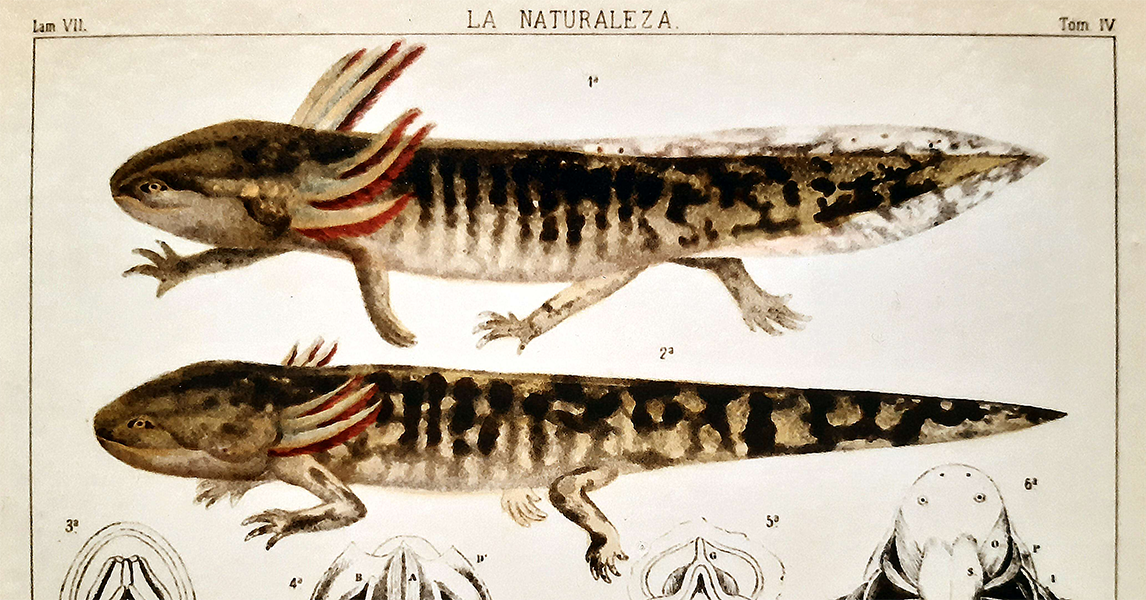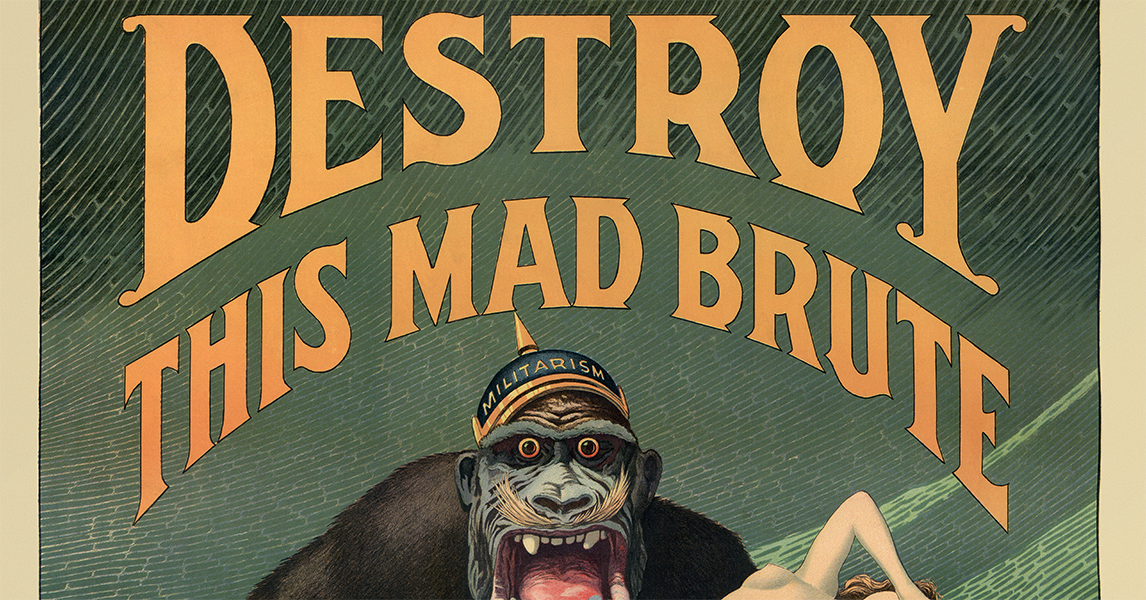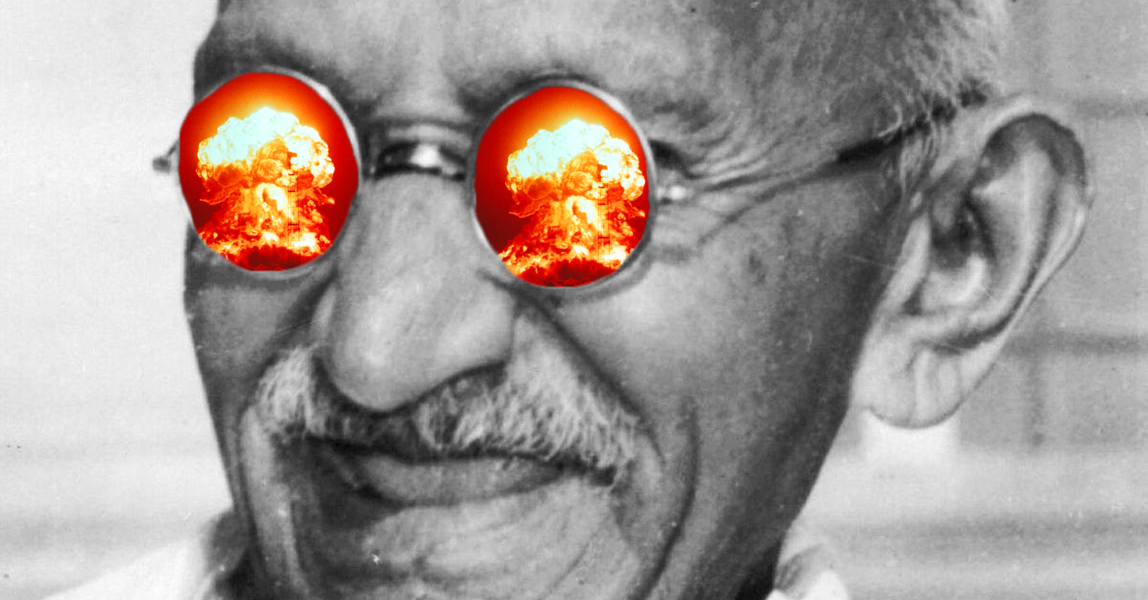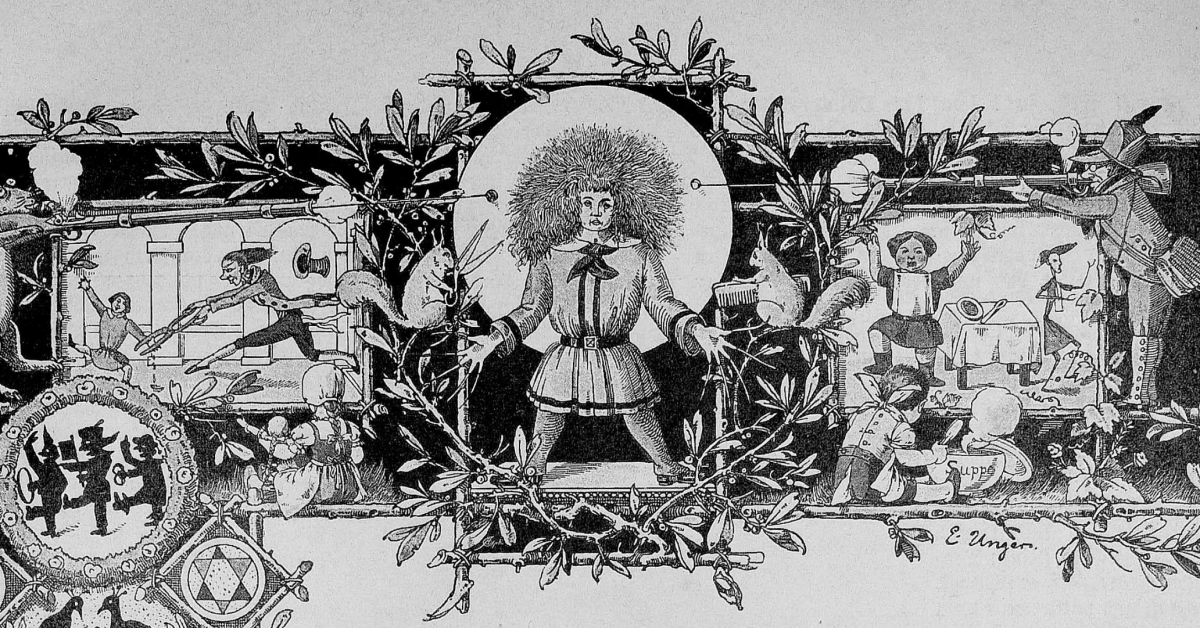More than any other, Christmas is an aesthetic holiday. No other time of year, not Easter with its chemically-corrupted, god-defaming, egg-resembling pastel lagomorph tumors; not Valentine’s Day with its centuries-out-of-date depictions of the cardiac epicenter and vociferous assurances that it is a violent infant who is responsible for all sexual desire; not the Fourth of July with its veneration of refuse meat and unrelenting dedication to the psychic torture of dogs everywhere; no other time comes close to the sheer aesthetic presence commanded by Christmas. Halloween tries its best.
Part of what makes the feeling so eternal is its breadth. Halloween is costume parties, things that kill people, and cute remixed versions of things that kill people. Saint Patrick’s Day is the color green, alcoholism, and ultra-rare white cultural appropriation. Christmas? Christmas is so much more. It’s lit-up trees and holly, it’s fresh-lain fake snow and ice skating rinks, it’s old-school carols that tiptoe around sex and new-school carols that dive straight into it. If you’re all about the classic Christian religious connection, there’s the manger and church services and “the meaning of Christmas”. If you’re more for the even more classic yuletide debauchery, you’ve got at your disposal the ancient traditions of draining bottles in the name of merriment and hanging a poisonous plant from your doorframe in hopes of accosting a cousin. There’s so much to pick and choose from, and you get to pick and choose. It’s less that there’s one unified Christmas aesthetic and more that we’ve unlocked a continuum of close-knit sister aesthetics, enough for each person to have a favorite. Yours might be a low-key Charlie Brown Christmas, or one spent gathered around family in an impeccably-decorated living room singing carols and watching factory-churned TV movies about working white women who head back to their hometowns to fall in love or working white women who head to Alaska to fall in love. There are so many options to pick from, but my personal favorite, and for my money the best, is destitute Victorian London.
With a holiday as steeped in history and tradition as Christmas, it can be hard to get to the bottom of why we celebrate the way we do. In this, I’m something of an expert, having spent years straining, trying to figure out why Swedes put up giant straw goats (and why others keep trying to burn them down), why some Japanese people make Christmas reservations at KFC, and why, amid all of the ornaments, my family always hid a pickle on our Christmas tree. The close association of poverty-stricken 1800s London and the yuletide season carries with it the same physique of these questions but none of the mystery. We know why images of poor families gathered close in a small home as snow pelts the cobblestone streets outside is such a holiday vibe. It’s encased in the name that best describes it: Dickensian.
The Ghost of Christmas Always
Charles Dickens’s depiction of Christmastime London is so iconic it redefined the holiday in the way few truly seminal pieces both before and after have. It was only two decades prior that Clement Clarke Moore set in ice the modern image of Santa Claus in his now-ubiquitous A Visit from Saint Nicholas (‘twas the night before Christmas…), and in the years since, authors like Robert L. May have staked their claim on our collective consciousness with inventions like Rudolph and his red nose. But of those who celebrate Christmas, there are few who know not the tale of the ghosts of Christmas Past, Present, and Yet to Come, and even fewer who have not heard the name “Ebenezer Scrooge”.
But as iconic as Dickens’s London is, there’s something about it that’s bothered me for a while. When I was younger, I never gave the scene much thought. It matched my image of Christmas to a T, like a story purpose-built for the holiday vibe. Part of that’s because Dickens’s snow-strewn England so closely resembled the Christmas landscapes I knew growing up in South Dakota (though mine involved notably fewer densely-crowded snow-covered shops and homes and more magnetically-opposed suburban homes doing their best to eliminate the snow that accumulated on their concrete driveways).
For this, I think I can be forgiven: where I’m from, snow starts in November and sometimes doesn’t let up for real until April. A Christmas like this year’s, with no snow at all, makes the news. But London? Despite its latitude (considerably further north than my home in the North Star state), London is warmed by the sun-struck waters of the Caribbean moving northeast along the Gulf stream. Southern England may receive a lot of rain, but it’s not known for its snow.
So what’s up? Why does the London I know from six hundred A Christmas Carol adaptations not match reality? Is it Hollywood imposing inaccurate depictions of winter on a foreign land? Is Dickens trying to spice up the holiday by making it a little chillier at the expense of gripping realism? Or… is it possible that Charles Dickens lived and wrote at the end of a strange global (but predominantly European and North American) era, hundreds of years in length, when everything was a lot colder?
This is the story of the Little Ice Age.
Let’s chill.
Climate fluctuations are integral to the story of human history. Millennia of migrations and human settlement are defined by climatic events like flooding and the growth and recession of glaciers. We accept without much prodding that it was the climate-born movement of glaciers and sea levels that allowed for the original peopling of the Americas by those who would become the first indigenous Americans (though recent research casts doubt on this long-accepted hypothesis; the first Americans may have traveled by sea much earlier), and we know that similar glacier migrations in Europe led to further peopling of that continent as early humans roamed in search of better living conditions.
As quick as we are, though, to accept and anticipate these stories, we’ve been slower to consider that less-dire climate shifts have also influenced human history, and that they’ve taken place much more recently.
To understand the impact of the Little Ice Age, we first need to briefly investigate the age that came before, the Medieval Warm Period, an era lasting roughly three hundred years between 950 and 1250 where temperatures were around 1.5 degrees (Fahrenheit) higher than twentieth century averages. The difference sounds minute, insignificant maybe, but gains some weight when we’re reminded that climatologists have warned that we bear the risk of climate catastrophe if the earth is allowed to warm by just under four degrees against pre-industrialization averages. We’re already most of the way there.
Precipitated by the (generally) warmer weather, Europe underwent a series of developments that made it look a lot different than it does today. Vineyards stretched far further north, affording places like England with home-grown vintages, and bridges had to stretch wider to span rivers that are now considerably narrower. This three hundred year span was a period of change across Europe, but perhaps one of the most significant results of the warm period was felt by people leaving the continent.
The early years of the Medieval Warm Period overlap with the end of the Viking Age. It was during this comparatively brief window that the Vikings colonized the far-off isles of Greenland and Iceland and passed through the previously frozen waterways that led them to the northeastern coast of North America.
Since its rediscovery, knowledge of (limited) Norse exploration of North America has steadily replaced the narrative that Christopher Columbus’s expedition was the first to land in the western hemisphere. Before I’d started researching for this piece, I’d assumed, like I think most of us do, that Norse presence in Newfoundland was incidental, accidental even. They made it, they died out, they never went back. But the reality is far different. Norse sailors not only went back, they made a habit of it, returning to harvest lumber from the forested shores and cod from off the underfished coast.
Altogether, trade between the Scandinavian mainland and Norse settlements in Greenland and Iceland was strong and allowed for stable growth of these communities from their initial settlement in the ninth and tenth centuries through 1200. But as early as 1203, conditions had changed. Ice had begun to clog the waterways year-round, making regular travel more dangerous. It’s hard to know how long the temperatures took to drop, but in 1492, Pope Alexander VI wrote a letter in which he speculated that ships had not been able to land in Greenland for some eighty years. The warm temperatures that opened the way west had receded and with them too left Europeans. By 1500, the Norse settlements on the world’s largest non-Australian island had died out completely, owing in part to a disappearance in eastern trade and support.
Witches, lutefisk, and the cutest li’l ice age
We should be clear that the Little Ice Age is distinct from the “big” ice ages of millennia past both in scale and definition. This wasn’t a two hundred-year-long winter. Temperatures shifted, often swinging from one extreme to another, but carried an overall trend of weather significantly colder than average. Unseasonable frosts as early as 1215 led to crop failures and famines throughout northern Europe.
The snow that covered mountain peaks expanded, falling and accumulating a full one hundred meters lower than it had in winters past. Glaciers conquered land with unmatched speed (by “a musket shot a day” according to one contemporary writer, if that’s helpful to you). By the 1400s, England’s vineyards had all shut down, the balmy British climate no longer supporting the growing of wine grapes.
Owing to the wild fluctuations in temperature, Europeans never adjusted to the whiplash provided by rarer and rarer “normal” years separated by longer stretches of frost. Colder seasons and barren grain silos were blamed, in part, on a growing population of witches.
It’s hard to definitively prove that the shift in temperatures is responsible for witch burnings and executions across Europe, even harder to attribute to it the lion’s share of the blame. But it’s worth noting that nearly all recorded executions of suspected witches occurred between 1300 and 1811 (Wikipedia’s List of People Executed for Witchcraft lists over 120 people killed during the Little Ice Age and a total of eight people killed before and after).
Other hard-to-verify claims allege that it was the freezing of the passages between Greenland and North America that, ironically, led the British to the so-called New World. For centuries before the weather cooled, Viking sailors had been relying on cod as a source of nutrition on their journeys. A replacement for herring, which was easy to find but tasted bland when preserved, cod could be kept just as easily by Vikings but proved far more palatable. Europeans on the mainland agreed. Since the Catholic Church’s mandate that Christians avoid the meat of warm-blooded animals on feast days, carnivorous Europeans had been searching for cold-blooded entrees worthy of their feast tables. But while people near to the coast and major waterways likely had little trouble supplementing their meals with undersea flesh, those further inland struggled to find fish that hadn’t turned to rotten slime on the several days’ journey from the shore. The introduction of an easily-preserved and less-nauseating fish changed European palates, so much so that as the seas began to freeze, sailors of opposing nations (and even those owing their allegiance to the same flag) began to conflict with one another over dwindling cod supplies.
As the situation grew dire, fishermen relying on cod harvests started taking riskier and riskier journeys into the deep Atlantic. It was these journeys, some historians allege, that led them to the cod-full shores of New England and Eastern Canada. As an allegation, it’s not that controversial. Slightly edgier is the idea that fishermen from Bristol on England’s western coast and Basque Country in northern Iberia had successfully completed the journey as early as a decade or more before Columbus. Some more brazen historians contend it was their poor guarding of this secret that helped the Genoan Asmodeus and his navigators along the way.
Charles Dickens, Frankenstein, and the Year Without Summer
Temperatures trended low throughout the multi-century Little Ice Age, but the coldest temperatures struck Europe in the early 1800s. By the early 1600s, the number of days spent with snow on the ground doubled or tripled in parts of England, and by 1812 white Christmases were commonplace. The Thames froze so regularly and with so thick a covering that London held frost fairs atop the ice. Owing to the still-alternating temperatures, the fairs didn’t happen every year (or anywhere close to it), but at least twenty-four frost fairs were recorded between 1400 and 1814. The last was maybe the best, the festivities including the leading of an elephant across the river’s frozen surface, an affair that’s really only cool because of how fucked up it would have been had it not worked.
But perhaps the most culturally-significant climatic event of this cold period was the Year Without Summer. Just six months after an elephant walked the Thames, a volcanic eruption half the world away in Indonesia shook the Earth. The biggest eruption in over a thousand years, Mount Tambora buried at least ten thousand locals on the island of Sumbawa and not long thereafter led to at least 40,000 more deaths on surrounding islands. The blast sent massive plumes of ash (one hundred times more than the 1980 eruption of Mount Saint Helens) all over the world, shielding the planet from the rays of the sun.
The effect abroad was catastrophic. Death spread as far as New England, where significant crop failures led to famine and the combined effects of cold temperatures and insufficient food supply led New Englanders to coin for the year the affectionate nickname “Eighteen Hundred Froze to Death”, which really seems like it should rhyme or something, but we have to forgive them; it’s possible the most creative ones were the first to perish.
The most significant effects of the year without summer were these, the famines and freezes that claimed innumerable lives. But the eruption and subsequent cooling would shape the world in more ways than mortal condemnation. The atmospheric presence of minerals launched by the blast led not only to darkened skies but also to vibrant, deep red sunsets, a theme that shows up more in the art of 1816 than pictures of years prior.
As temperatures dropped and stayed low, those able to protect themselves from the worst effects of the year found it necessary to come up with new ways to pass the time. The writer Lord Byron held a retreat at his home in Geneva that hosted other writers and artists, and the story goes that it was a friendly competition to write the scariest story that led to Byron’s 1816 poem, Darkness, and guest Mary Shelley’s Frankenstein.
Warmth never-ending
There’s less literature on the end of the Little Ice Age than there is on the beginning and its harshest moments. What we know is that glaciers started retreating in the mid-to-late 1800s. It’s hard to know for sure how much of the end of the Little Ice Age is attributable to natural phenomena and how much is the responsibility of humans now nearly a century deep into the industrial revolution, a series of scientific and industrial accomplishments that uncapped the Pandora’s box that is anthropogenic global warming.
In a way, I think human resilience through unbearably cold winters embodies the holiday spirit; I’ve written at length about how Christmas is a machine far greater than the sum of its parts, a season built by hundreds of generations of humans alike and different but united by their shared desire to brighten up the darkest time of year.
At the same time, in a year like this one, where holiday temperatures are warm and mild, it’s hard to fully appreciate the value of a few degrees. Now, the threat of century-long winter seems so far off as to be fantastical. But while we don’t seem to be at risk for a recurrence of the Little Ice Age anytime soon, looking back at six centuries of frost caused by such a minor decline in temperatures might lead us to look again at our current temperature trends and wonder what a comparable increase could do. Some of the effects of the great, millennium-defining chill were obvious, predictable even. Others, just as catastrophic, had to be experienced to be believed. As temps worldwide continue to rise, we might like to comfort ourselves with reassurances that our modern world is endowed with the necessary innovations to weather the storm. But we’ve been surprised before.
Epilogue: A personal note
If you’re here for the story, it’s over. That’s all I have to say about the Little Ice Age. I’ve all but exhausted my notes and I’ve lectured more about climate science than the holder of a liberal arts degree has any right to do. What follows is something more personal.
Since 2019, I’ve spent the end weeks of each year writing something Christmas-themed. The process has changed. The longer we craft, the more refined our chosen crafts tend to get. We build ourselves up with new standards and expectations, and what was once a casual project becomes a months-long headache spent comparing a story written for $0 and $0 in ad revenue to Ulysses. My two pieces about Catalonian poop culture will never hold a candle to Don Quixote.
And so, this Christmas, a gift for myself: a challenge. One piece in forty-eight hours. It’s how I got started doing this, writing screeds on the train to post when I get home. This one’ll be slightly better-edited than those (in that it’ll be edited), and I’m still holding myself to the promise of trying not to waste your time. This is a story I find infinitely interesting, and it’s one that I’ve been sitting on for an entire year, shelving it this time in 2022. I hope you enjoyed it.
Unless I choose tomorrow to lace my cookies and candy canes with experimental amphetamines, this is my only Christmas piece this year. As always, an incomparably Merry Christmas to those who celebrate, and a Happy Holiday to those who merely observe. Here’s to more in 2024.
Read More
- How the Little Ice Age Changed History by John Lanchester for The New Yorker
- The Little Ice Age by Brian Fagan
- Lust, lies, and empire: The fishy tale behind eating fish on Friday by Maria Godoy for NPR
- The year without a summer: Peering through volcanic veils by Erik Conway for NASA Climate
